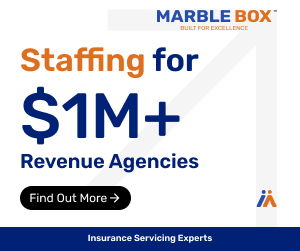Product knowledge is always important for insurance producers. In order to properly advise a client about the types of coverage to consider, an agent needs a good knowledge of what various policies cover and exclude. This becomes even more important for clients whose loss exposures involve potentially severe losses.
A South Dakota insurance agency specialized in placing aviation coverage. One of their long-term clients was a company that provided various aeronautical services, including charter services and aircraft maintenance. While it owned a few small three-seat aircraft, it also leased a larger craft that could seat up to six people and fly in more difficult weather. They used this craft for charter flights, producing a significant increase in business. The lease agreement required the company to obtain liability insurance on the aircraft in the amount of $2 million.
At the time of the lease, the company carried two liability policies – a $2 million aviation liability policy and a commercial general liability policy with a $20 million limit. When the policies were due to renew, the agency presented quotes from the incumbent carrier with the expiring limits, and an alternative quote for a $5 million limit on the leased aircraft. However, due to cost and a desire to keep all coverages with the same insurer, the insured declined the higher limits and kept the expiring limits.
Two years after the lease, the insured contacted another agency to obtain alternative quotes. They asked the incumbent agent to match the competing agent’s quotes, which he was able to do. At a pre-renewal meeting, the insured asked the incumbent agent whether the liability limits were adequate. According to witnesses, the agent “talked about the $20 million CGL Policy covering maintenance issues and protecting (the insured) if there was a plane crash caused by faulty maintenance.” The insureds later claimed that they left the meeting believing they had $2 million coverage under the aviation policy for a plane crash plus $20 million coverage under the CGL policy if the crash resulted from maintenance issues.
A few months after renewal, the insured had the leased aircraft repainted. They asked their insurer to increase the amount of property insurance on the craft. The insurer also increased the aviation policy’s liability limit to $3 million.
Later that year, the aircraft crashed shortly after takeoff, killing the pilot and three passengers. The passengers’ estates sued the insured for wrongful death, and the insurer paid out the $3 million under the aviation liability policy. However, the settlement amounts exceeded the limits, and the insurer denied coverage under the CGL policy. Like most CGL policies, it excluded coverage for injuries arising out of the use of an aircraft owned or operated by the insured.
The insured sued the agency for negligence and breach of fiduciary duty. The agency asked the court to dismiss the breach of fiduciary duty claim and part of the negligence claim. The court dismissed the fiduciary duty claim. However, it refused to dismiss the negligence claim, finding that there was evidence the insured might have made different decisions had they known the truth about the CGL policy. “… (T)here is enough evidence,” the court wrote, “that (the agency) misinformed (the insured) on whether the $20 million CGL Policy could apply to a crash of the Cessna caused by a maintenance issue, and whether that misinformation caused (the insured) to forego seeking higher limits in the Aviation Policy or to otherwise avoid the risk.”
It is unclear why the agent believed that a CGL policy would provide any aircraft liability coverage. What is clear is that he did not know the policy well enough. With better knowledge of the product, he might have warned the insured that they had only $3 million coverage for a plane crash. The insured might have chosen to buy just the $3 million coverage, but that would have been their choice. In this case, the most the insured was offered was $5 million.
Giving an insured bad information about an insurance policy can be costly. An insurance agent cannot be expected to have each policy memorized. However, keeping copies of forms accessible for research allows agents to give insureds accurate information and prevent litigation.















